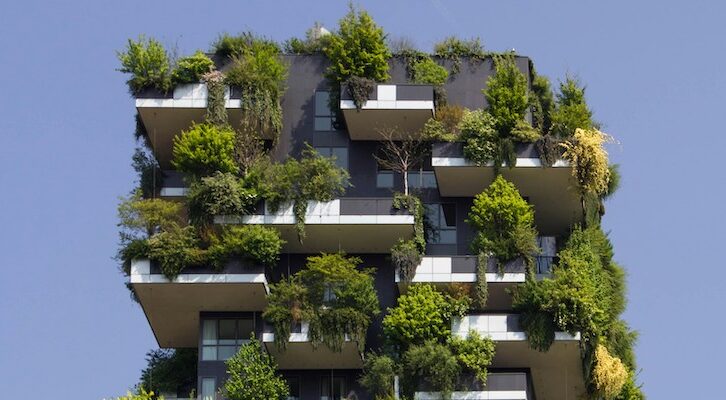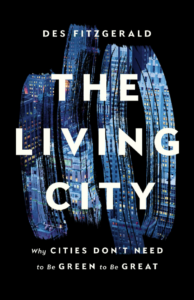
Why Are We So Obsessed with Making Cities Greener?
Des Fitzgerald Wonders What "Nature" Actually Is
I hate Paris. It’s something about the mix of imperial pomp and saccharine cutesiness in the streetscape. It’s also the terrible food, I think. And though quite a few European cities confuse rudeness with personality, in Paris there is just something about the sheer frequency of interpersonal unpleasantness that, over time, becomes wounding to the human spirit. Mostly my hatred of Paris is a reaction to a very dull and conventional city’s vastly inflated reputation. I’m broadly with Le Corbusier here: raze the center, build a highway and some skyscrapers, then fill the space between with gardens and vegetable patches. That at least would be interesting.
I was in Paris, nonetheless, for a gathering of global “thought leaders” interested in the benefits of making the modern city more green. It was, in fact, an auspicious location. The mayor of Paris had just announced a plan to surround the city’s major landmarks with trees, creating an “urban forest” to help meet a goal of being 50 percent covered by trees by 2030. This was no small endeavor: “The city imagines turning the square in front of city hall into a pine grove,” wrote the journalist Feargus O’Sullivan, “while future springtimes will see the opera house’s back elevation emerge from a sea of cherry blossom. The paved plaza at the side of the Gare de Lyon will become a woodland garden.”
The conference I was attending—a self-described global “movement,” in fact—was a forum for scientists, planners, political leaders, and others to come together around a shared green city agenda. It was big: several hundred attendees from around the world at the Sorbonne, including many major figures from the world of urban ecosystems, with an art program, an accompanying book of “flash fiction,” and a “farm-to-table” banquet. For an event happening on a university campus, it was slickly choreographed—with a rolling program of public “dialogues,” “microtalks,” and “seed sessions,” ranging from how to finance green infrastructure to how to meditate with plants. There were speeches from various French political and business figures, a wordless performance about street trees that I didn’t understand, and lots of talk about biodiversity and the psychological benefits of nature. I went to one session where you got to wear a VR headset to see what your green roof might look like and one where you had to pretend to be a place and then be psychoanalyzed as if you were that place. An artist gave a talk on how she likes to dance with nature in the city, and later I saw her weaving her body, with great deliberation, through the array of small potted plants that lined the meeting’s entranceway.
There was something very charming but also oddly evangelical about all of this—like a weird mix of Silicon Valley and Christian revivalism. “Your project is so sacred and so wonderful,” said one speaker to another. Someone else said to a panel of presenters, “Your talks are so beautiful and poignant.” A planner told the crowd, with great seriousness, “My job is to be a healer.” You get the idea. At the beginning of each day, everyone had to stand up, look around, and introduce themselves to the people nearest to them—it was that kind of conference.
Amid the fervor and the enthusiasm and the—I wrestle with my own cynicism here—basically good desire to fill the city with trees and birds, to plan in a more ecologically sustainable way, and so on, I was struggling with a larger problem—a problem that runs through the work of the great park designers of the nineteenth century, the revolutionary modernists of the twentieth, and, as we will see, a whole host of other major urban movements and philosophies. That problem explains a lot of my own suspicion about this entire scene and is one of the major issues I want to help myself understand as I move around this world.
The problem is that everyone in Paris basically seemed to think more nature was good. But no one ever actually said what meant by “nature” in the first place. What they meant by this term was, I guess, what most people mean by it: green things, trees, parks, birds, open space, clean air. This was never actually said, though, and so I was left wondering. We’re all convinced that there’s something wrong with contemporary city life. We’re equally all convinced—I think—that much of what’s wrong has to do somehow with an absence of nature. And that absence seems to go in two directions. On the one hand, there’s not enough natural stuff in cities—too few trees, not enough otters. On the other hand, a kind of unnatural way of living has taken hold among city people—too much sitting in air-conditioned buildings, too much concrete, too much stress and speed. All of this, I think, is fairly uncontroversial.
But it was unclear to me then—it still isn’t clear to me now—what it is, exactly, that makes the city so unnatural in the first place. Maybe this seems like hairsplitting, but truly, if put on the spot, I don’t think I know what “nature” actually is. And while we’re at it, I’m not even sure I know what counts as “the city” and what doesn’t. Walk as far as you can in a city such as London or Shanghai. Walk through Swansea, even. Where does the city actually end? At what point—exactly—do you enter the great “outside” of modern urban life?
In an influential essay in 1938, Lewis Mumford, perhaps the greatest American critic of urban planning, defined a city as that place where “the diffused rays of many beams of life fall into focus.” Cities, said Mumford, are the culmination of humankind’s domination of the earth; they’re where the need for industry and cooperation have come together. Cities are the great sites of monumental and public life they are living museums of themselves, cathedrals to their own glory and to the forms of life they make possible; cities are where vastly different kinds of people can come together with different functions, and desires, and needs, that somehow are orchestrated into the great four-dimensional fold of human social life.
Maybe this seems like hairsplitting, but truly, if put on the spot, I don’t think I know what “nature” actually is.
This seems like a fine description of Rome in the fourth century or London in the nineteenth. But it tells us more or less nothing about daily life in a midsized regional city in the early twenty-first century—which is to say, it tells us nothing about the mundane, unremarkable, badly planned, and more or less ugly places where almost all urban life plays out today. “The future of the city” sounds like a fine topic for discussion until you realize that we are talking about a category that includes Beijing, Poughkeepsie, Byzantium, Atlantis, and Limerick.
Airy talk tells us little about what actually counts as “the city” and what doesn’t—about what is urban space, what is a natural environment, and what actually marks the break between these categories. This really matters. In Paris, lots of people were convinced that the future of the city inevitably meant bringing healthier, greener, more natural, noncity things into it, even reshaping and replanting the city itself around those things.
But take a concrete tower block—for many people the epitome of unnatural urban living and the great icon of modern, nature-conquering architecture and planning. There’s nothing obviously unnatural about concrete. Even the raw béton brut, the concrete that gives its name to the distinctive style we call brutalism; the chalk, clay, and various chemical admixtures that make up a cement; the sand, gravel, and slag of aggregate; the water that binds it all together . . . all of these things are unambiguously of the earth. All of them are found in, and harvested from, the wild outdoors. All of them have been bobbing around the surface gloop that covers this planet at least as long as we have, and likely longer. To rub one’s face against a concrete wall and to rub it against a leaf is, no doubt, a different sensory experience—but it is not a difference that is obviously marked by contact with “nature.” Yes, someone might say, but surely there is something in the processing of these raw materials that somehow shifts the end product into the category of the unnatural. This does not seem convincing. Just as with moral panics around “processed food,” the act of mixing, processing, and combining is complex, but it is not doing any metaphysical work. There is no process that can make things unearthly, no churn that lifts them out of the same chalky, debased realm that humans, along with every other living creature on the planet, have always inhabited. “The dams of beavers and the webs of spiders are presumably natural,” says the environmental philosopher Steven Vogel—then, “why are the dams built by humans or the polyester fabrics they weave not so?” If we feel things to be unnatural—if on principle we dislike a modern art gallery, say, or a Cup-a-Soup—well, we are entitled to our moralism, but no one is obliged to grant this feeling any philosophical or scientific status.
____________________________

Excerpted from The Living City: Why Cities Don’t Need to Be Green to Be Great by Des Fitzgerald. Copyright © 2023. Available from Basic Books, an imprint of Hachette Book Group, Inc.
Des Fitzgerald
Des Fitzgerald is professor of medical humanities and social sciences at University College Cork. He has been named a “New Generation Thinker” by the BBC and the Arts and Humanities Research Council. He lives in Cork, Ireland.



















